-
Home PageHome Page
-
General Chemistry 1 Homepage
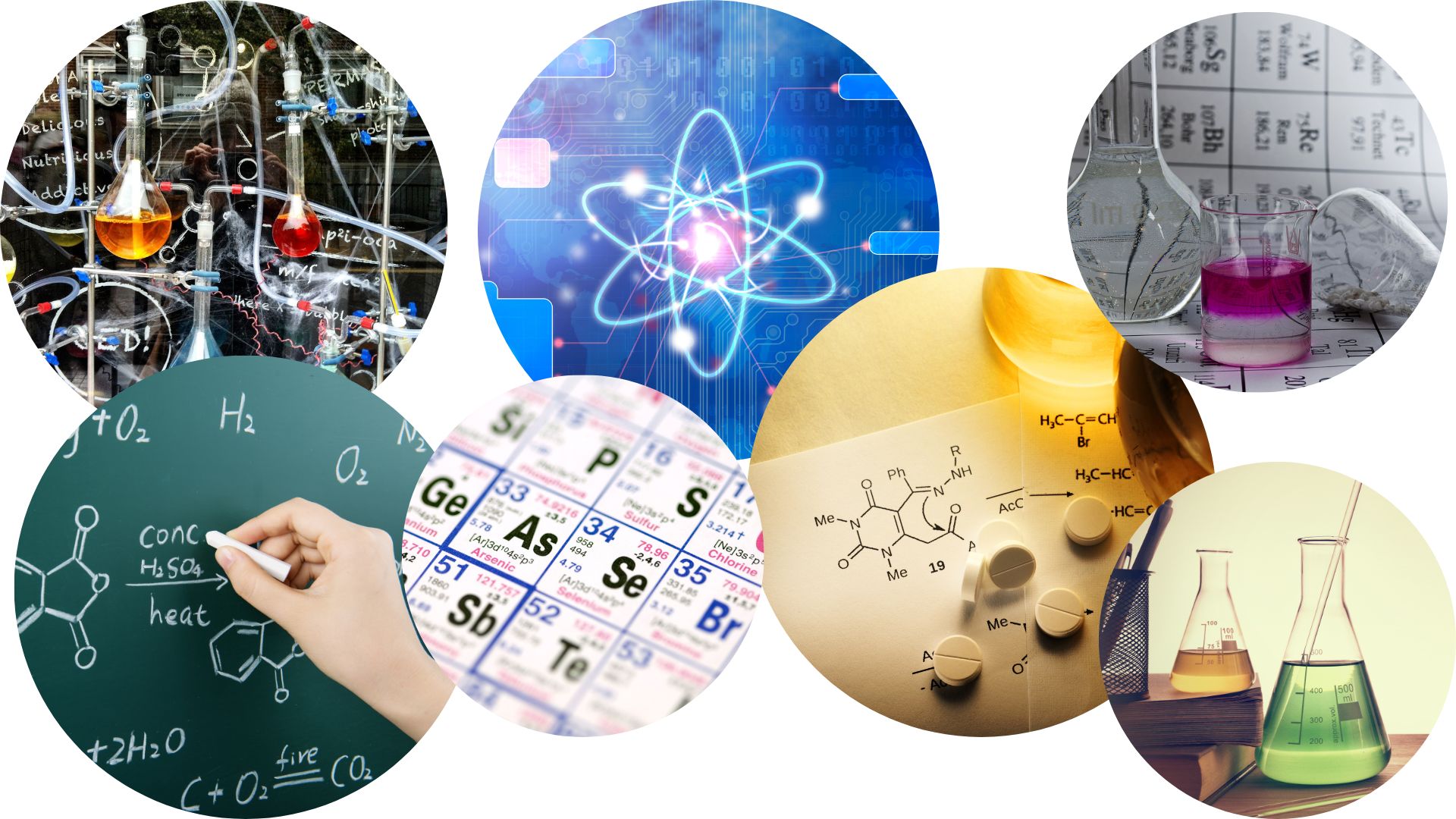

Welcome to the General Chemistry 1 course, part of the series for the Pre-Health Sciences Training Certificate. This course and the certificate are designed primarily for learners interested in preparing for and gaining entry to health-related programs and to help address the prerequisites for the Medical College Admission Test (MCAT). Our General Chemistry 1 course provides learners with a comprehensive overview of the fundamental principles of chemistry. This course covers basic principles and concepts of chemistry, such as atomic structure, chemical bonding, chemical reactions, stoichiometry, and the properties of gases, liquids, and solids.
The General Chemistry 1 course is sponsored in part by the International Development Research Centre and the University of the Incarnate Word School of Osteopathic Medicine. Like all NextGenU.org courses, it is competency-based, using competencies based on the Association of American Medical Colleges’ Medical College Admission Test. It uses learning resources from accredited, academic, professional, and world-class organizations and universities, such as Rice University. This course was designed by Alixandria Ali, BSc; Kabiru Gulma, B. Pharm, Ph.D., MSc., MBA; Felix Emeka Anyiam, MPH, MScPH, DataSc.; Sherian Bachan, MSc, BSc; Reisha Narine, MSc, BSc; Aduke Williams, BA; Sara Wildman, BSc; Carolina Bustillos, MD, DiplEd; Rhonda Prudent, BSc; Maryam Musa, MBBS; Pablo Baldiviezo, MD, MSc, DiplEd, Marco Aurelio Hernandez, Ph.D., MSc; MSc; BSc; Tristan Aaron Wild, BMSc (Hons); Amy Zhao; and Syed Hussain.
For publications on the efficacy of NextGenU.org’s courses, see NextGenU.org’s publication page.
There are eight (8) modules to complete, which provide an introduction to:
- Module 1: Matter and its Properties
- Module 2: Measurements
- Module 3: Atomic Structure
- Module 4: The Periodic Table
- Module 5: Bonding and Chemical Interactions
- Module 6: Compounds and Stoichiometry
- Module 7: Chemical Kinetics
- Module 8: Chemical Equilibrium
The completion time for this course is estimated at 46 hours, comprising 13 hours of learning resources, 27 hours of studying and assimilation of the content, and 6 hours of participating in learning activities and quizzes to assist learners in synthesizing learning materials. This course is equivalent to 1 credit hour in the U.S. undergraduate/ bachelor’s degree system.
The course requires the completion of all quizzes, discussion forums, and practical activities to receive a course certificate. Practice quizzes are available throughout the course and contain ten multiple-choice questions each. After completing each module, quiz, and learning activity, at the end of the course, you will have access to a final exam consisting of 40 multiple-choice questions and a chance to evaluate this course. Participants have up to three opportunities to take the final exam and achieve the required passing score of >=70%. Once you have passed the final exam and completed the evaluations, you can download a certificate of completion from NextGenU.org and our course’s co-sponsoring organizations.
We keep your personal information confidential, never sell any of your information, and only use anonymized data for research purposes. Also, we are happy to report your testing information and share your work with anyone (your school, employer, etc.) at your request.
Engaging with this Course:
This free course is for students who have graduated from high school and want to prepare to become a health professional and/or pass the MCAT exam. You may also browse this free course for your personal enrichment. There are no requirements.
To PASS and Obtain a Certificate
- The pre-test,
- All the reading requirements,
- Complete all quizzes and pass with a 80% with unlimited attempts.
- All case scenarios,
- All discussion forums,
- The final exam with a minimum of 80% and a maximum of 3 attempts.
- The self and course evaluation forms.
To obtain credit:- Complete all requirements listed above for the certificate, and
- Your learning institution or workplace should approve the partner-university-sponsored NextGenU.org course for educational credit, as they usually would for their learner taking a course anywhere.
NextGenU.org is happy to provide your institution with the following:- A link to the description of the course training so they can see all of its components, including the co-sponsoring institution,
- Your grade on the final exam,
- Your work products (e.g., discussion forum responses) and any other required or optional shared materials you produce and authorize to share with them,
- Your evaluations -- course and self-assessments, and
- A copy of your certificate of completion with the co-sponsoring organizations listed.
To obtain a degree, NextGenU.org co-sponsors degree programs with institutional partners. To obtain a full degree co-sponsored with NextGenU.org, registrants must be enrolled in a degree program as a student of a NextGenU.org institutional partner. If you think your institution might be interested in offering a degree with NextGenU.org, contact us.We hope you will find this a rewarding learning experience, and we count on your assessment and feedback to help us improve this training for future students.
Here are the next steps to take the course and earn a certificate:
- Complete the registration form,
- Take the pre-test, and
- Begin the course with Module 1: Matter and its Properties. In each lesson, read the description, complete all required readings and any required activity, as well as take the corresponding quizzes.
-
Module 1: Matter and Its Properties
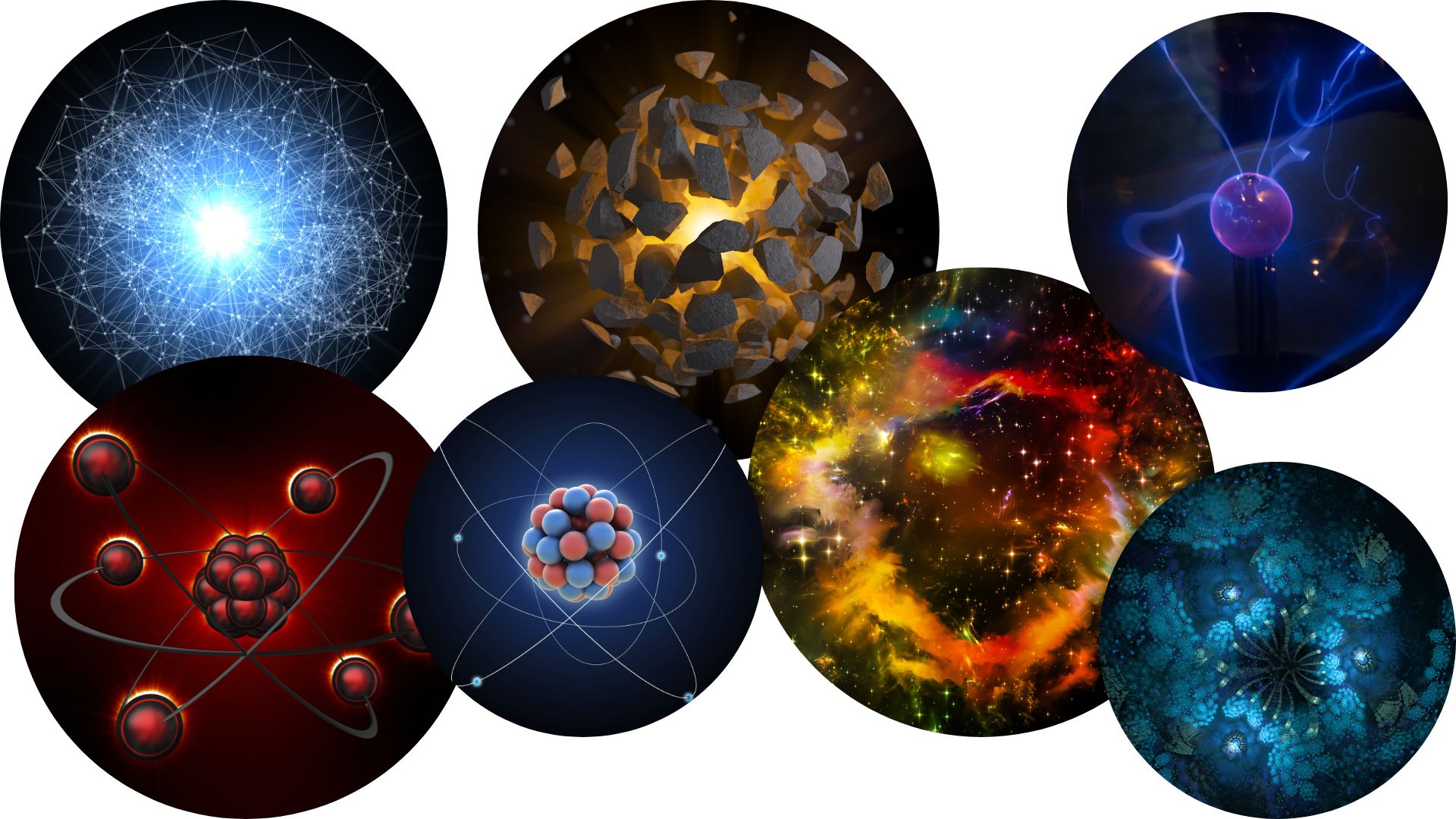 Instructional Goals covered in this module:
Instructional Goals covered in this module:- Understand the various states of matter with an emphasis on how particles are ordered.
- Understand the various states of matter with an emphasis on how particles are ordered.
-
Module 1: Lesson 1: Classification of Matter
Student Learning Outcomes:
Upon completion of this lesson, you will be able to:- Define matter and energy.
- Describe the laws of the conservation of mass.
- Compare and contrast the three common states of matter: solid, liquid, and gas.
- Describe the classifications of the matter: elements, compounds, and mixtures (heterogeneous and homogeneous).
- Describe the techniques used to separate mixtures.
1 URL -
Module 1: Lesson 2: Properties of Matter
Student Learning Outcomes:
Upon completion of this lesson, you will be able to:- Understand the difference between physical and chemical change.
- Contrast chemical and physical properties.
- Relate the properties of matter to particle arrangement, energy of particles, and distance between particles.
- Contrast extensive and intensive properties.
1 URL -
Module 1: Lesson 3: Change of State of matter
Student Learning Outcomes:
Upon completion of this lesson, you will be able to:- Interpret graphs for heating and cooling processes that involve a change of state.
- Identify phase changes: melting, freezing, boiling, condensation, sublimation, and deposition.
1 URL, 1 Forum - Interpret graphs for heating and cooling processes that involve a change of state.
-
Module 2: Measurements
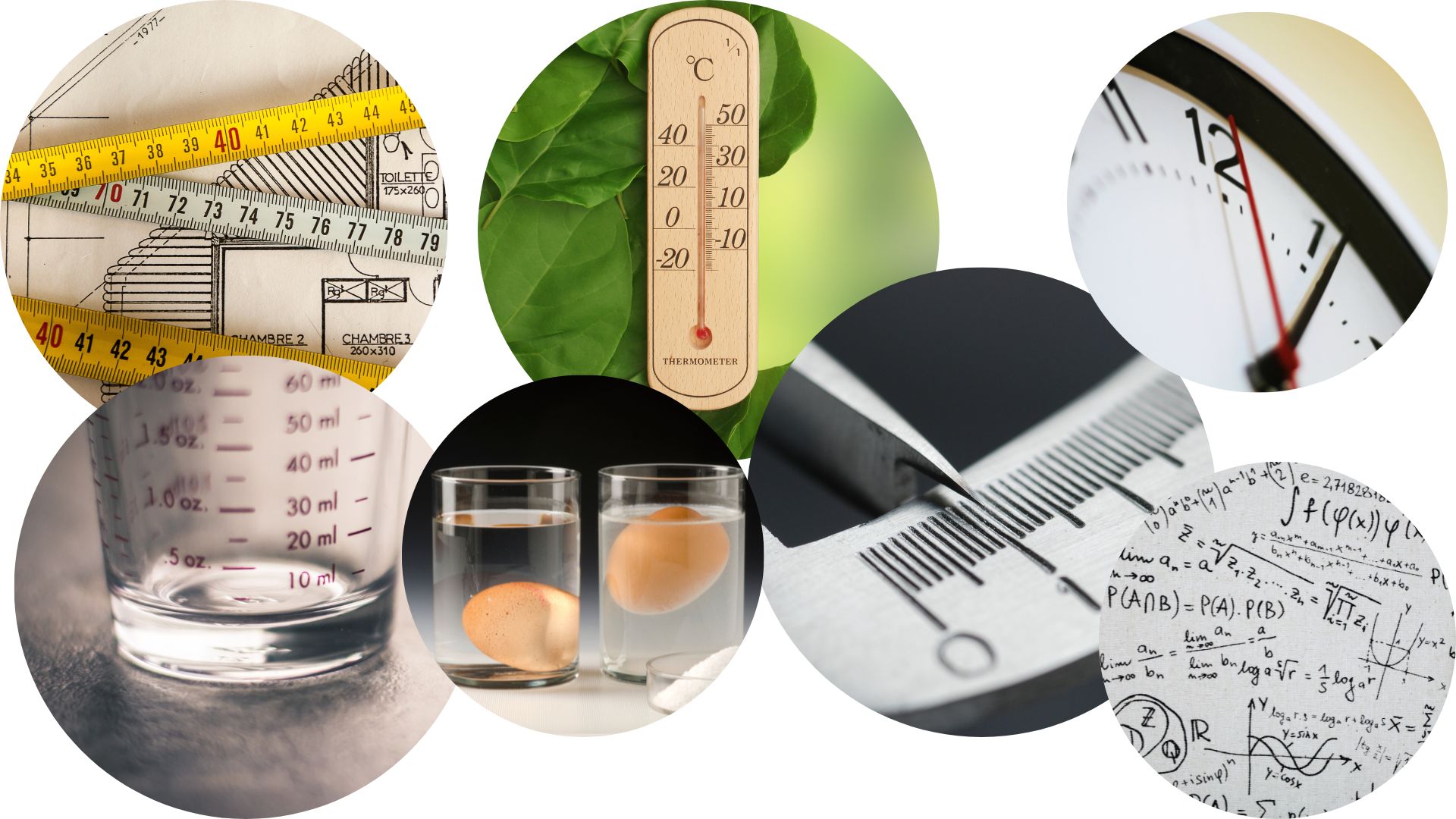 Instructional Goals covered in this module:
Instructional Goals covered in this module:-
Understand the difference between accuracy and precision, the different sources of errors in measurements and how to express numbers properly.
-
-
Module 2: Lesson 1: Measurements
Student Learning Outcomes:
Upon completion of this lesson, you will be able to:- Explain the process of measurement.
- Describe the properties and units of length, mass, volume, density, temperature, and time.
- Relate mass, volume, and density of a substance.
- Perform basic unit calculations and conversions in the metric and other unit systems.
- Recognize the SI (metric) system of units, including the SI prefixes in chemistry.
- Describe fundamental and derived units and identify some examples.
1 URL -
Module 2: Lesson 2: Measurement Uncertainty, Accuracy, and Precision
Student Learning Outcomes:
Upon completion of this lesson, you will be able to:- Define precision and accuracy to describe measured quantities.
- Learn the rules to determine significant figures when reporting measurements and calculated values.
- Represent numbers using scientific/exponential notation.
- Identify exact numbers and how/when to apply rules for rounding up.
1 URL - Define precision and accuracy to describe measured quantities.
-
Module 2: Lesson 3: Mathematical Treatment of Measurement Results
Student Learning Outcomes:
Upon completion of this lesson, you will be able to:- Determine conversions from one metric unit to another.
1 URL - Determine conversions from one metric unit to another.
-
Module 3: Atomic Structure
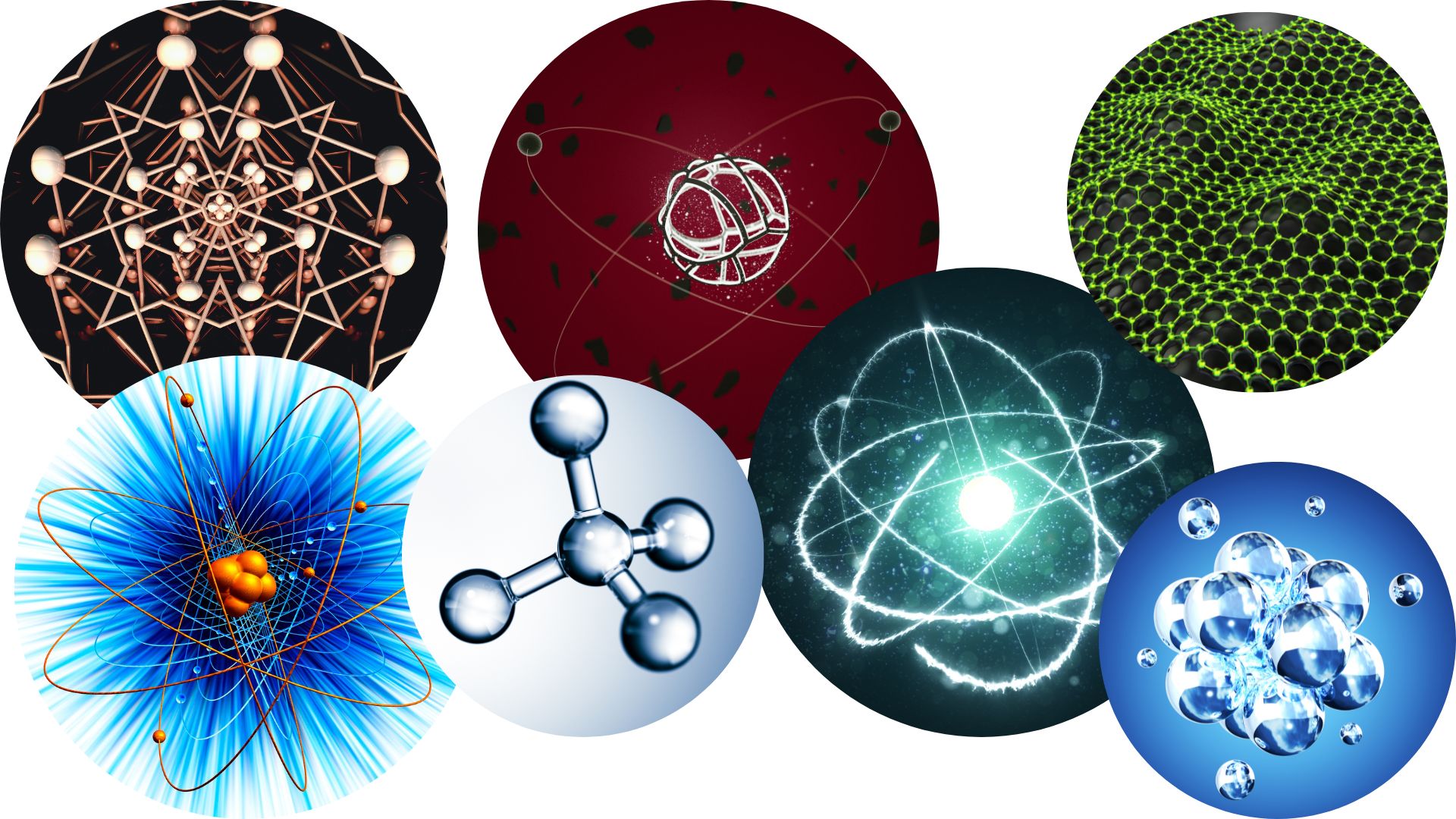 Instructional Goals covered in this module:
Instructional Goals covered in this module:- Understand the structure and composition of atoms and their isotopes.
- Understand the structure and composition of molecules and their isomers.
- Understand the foundational concepts of Quantum Mechanics.
-
Module 3: Lesson 1: Atomic Theory of Matter
Student Learning Outcomes:
Upon completion of this lesson, you will be able to:- Describe the postulates of Dalton’s atomic theory.
- Explain the relationship between atoms, elements, molecules, and compounds.
- Explain the significance of the law of multiple proportions and constant compositions.
1 URL -
Module 3: Lesson 2: The Structure of the Atom
Student Learning Outcomes:
Upon completion of this lesson, you will be able to:- Examine Thomson’s experiment in which he discovered the electron.
- Describe Rutherford’s experiment that led to the nuclear model of the atom.
- Categorize the subatomic particles that compose atoms.
- Define isotopes and give examples for several elements.
1 URL -
Module 3: Lesson 3: Atomic Structure and Symbolism
Student Learning Outcomes:
Upon completion of this lesson, you will be able to:- Write and interpret symbols that depict the atomic number, mass number, and charge of an atom or ion.
- Use Coulomb’s law to explain the factors that govern the stability of the particles in at atom.
- Define the atomic mass unit and average atomic mass.
- Calculate average atomic mass and isotopic abundance.
- Describe how a mass spectrometer can be used to determine the fractional abundance of the isotopes of an element.
1 URL -
Module 3: Lesson 4: Chemical Formulas
Student Learning Outcomes:
Upon completion of this lesson, you will be able to:- Symbolize the composition of molecules using molecular formulas and empirical formulas.
- Present the bonding arrangement of atoms within molecules using structural formulas.
- Determine when the chemical formula of a compound represents a molecule.
- Determine the isomeric relationship between a pair of molecules.
1 URL -
Module 3: Lesson 5: Electromagnetic Energy
Student Learning Outcomes:
Upon completion of this lesson, you will be able to:- Explain the basic behavior of waves, including traveling waves and standing waves.
- Describe both the wave and particle nature of light.
- Correlate the wavelength and frequency of a wave.
- Use appropriate equations to calculate related light-wave properties such as period, frequency, wavelength, and energy.
- Explain the different regions of the electromagnetic spectrum.
1 URL -
Module 3: Lesson 6: Development of Quantum Theory
Student Learning Outcomes:
Upon completion of this lesson, you will be able to:- Describe the concept of wave–particle duality that was observed in electromagnetic radiation to matter.
- Explain the quantum mechanical description of electrons in orbitals.
- Attribute the 3D shape of an orbital and how electrons are arranged within the atom to the radial distribution function.
- List and describe traits of the four quantum numbers that describe orbitals and specify the location of an electron in an atom.
- State the postulates of Bohr’s theory of the hydrogen atom.
- Relate the energy of a photon to the associated energy levels of an atom.
2 URLs -
Module 3: Lesson 7: Electronic Structure of Atoms (Electron Configurations)
Student Learning Outcomes:
Upon completion of this lesson, you will be able to:- Derive the predicted ground-state electron configurations of atoms and ions.
- Relate electron configurations to element classifications in the periodic table.
1 URL -
Module 3: Lesson 8: Molecular and Ionic Compounds
Student Learning Outcomes:
Upon completion of this lesson, you will be able to:- Define ionic and molecular (covalent) compounds.
- Predict the type of compound formed from elements based on their location within the periodic table.
- Determine formulas for simple ionic compounds.
1 URL, 1 Forum -
Module 4: The Periodic Table
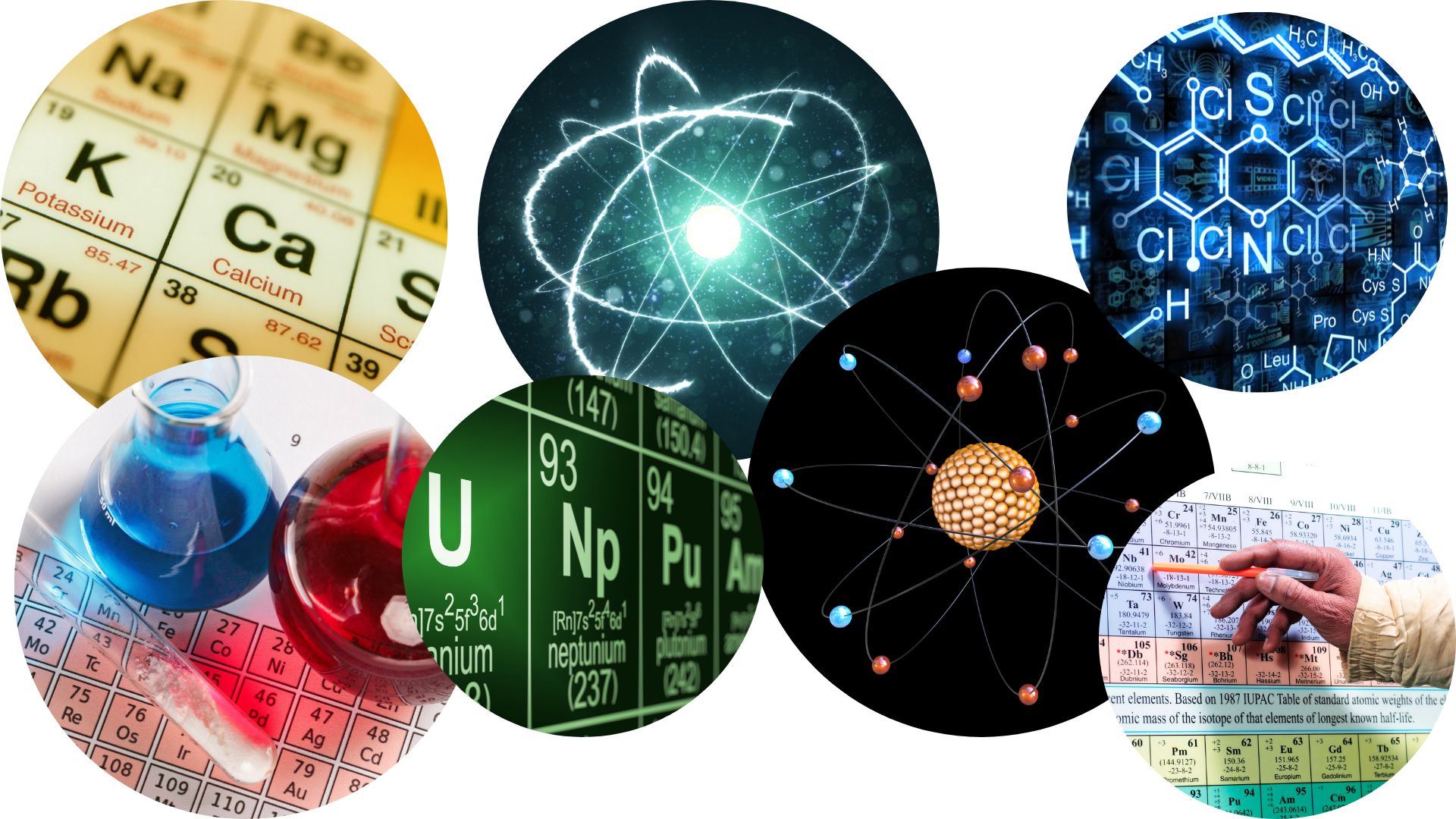
Instructional Goals covered in this module:
- Understand fundamental atomic structure and the periodicity of elements in the periodic table.
-
Module 4: Lesson 1: Periodic Variations in Element Properties
Student Learning Outcomes:
Upon completion of this lesson, you will be able to:
- Explain the observed trends in atomic size, ionization energy, and electron affinity of the elements.
Click here to start this lesson1 URL - Explain the observed trends in atomic size, ionization energy, and electron affinity of the elements.
-
Module 4: Lesson 2: History of the Periodic Table
Student Learning Outcomes:
Upon completion of this lesson, you will be able to:- Describe the history of the periodic table.
1 URL -
Module 4: Lesson 3: The periodic Table
Student Learning Outcomes:
Upon completion of this lesson, you will be able to:
- State the periodic law and explain the organization of elements in the periodic table.
- Predict the general properties of elements based on their location within the periodic table.
- Identify metals, nonmetals, and metalloids by their properties and/or location on the periodic table.
- Describe how Mendeleev predicted the properties of undiscovered elements.
Click here to start this lesson1 URL -
Module 4: Lesson 4: Effective Nuclear Charge
Student Learning Outcomes:
Upon completion of this lesson, you will be able to:
- Explain the basics of electron shielding and penetration.
Click here to start this lesson1 URL - Explain the basics of electron shielding and penetration.
-
Module 4: Lesson 5: Sizes of Atoms and Ions
Student Learning Outcomes:
Upon completion of this lesson, you will be able to:- Determine periodic trends in atomic radii.
- Determine the relative ionic sizes within an isoelectronic series.
1 URL -
Module 4: Lesson 6: Ionization Energy
Student Learning Outcomes:
Upon completion of this lesson, you will be able to:- Determine the relation between ionization energies with the chemistry of the elements.
1 URL - Determine the relation between ionization energies with the chemistry of the elements.
-
Module 4: Lesson 7: Electron Affinity
Student Learning Outcomes:
Upon completion of this lesson, you will be able to:- Identify the inverse relationship of ionization energies and electron affinities.
- Explain electron affinity as a measure of the energy required to add an electron to an atom or ion.
1 URL - Identify the inverse relationship of ionization energies and electron affinities.
-
Module 4: Lesson 8: Metals, Non-metals, and Metalloids
Student Learning Outcomes:
Upon completion of this lesson, you will be able to:- Distinguish the basic properties separating Metals from Nonmetals and Metalloids.
1 URL - Distinguish the basic properties separating Metals from Nonmetals and Metalloids.
-
Module 4: Lesson 9: Group Trends for Group 1A and 2A
Student Learning Outcomes:
Upon completion of this lesson, you will be able to:- Define alkali metals.
- Contrast alkaline earth metals and alkaline metals.
- Describe the reactions of alkali metals.
1 URL - Define alkali metals.
-
Module 4: Lesson 10: Group Trends for Selected Nonmetals
Student Learning Outcomes:
Upon completion of this lesson, you will be able to:- Describe the chemical properties of Hydrogen, the group 16, 17, and 18 elements.
1 URL - Describe the chemical properties of Hydrogen, the group 16, 17, and 18 elements.
-
Module 5: Bonding and Chemical Interactions
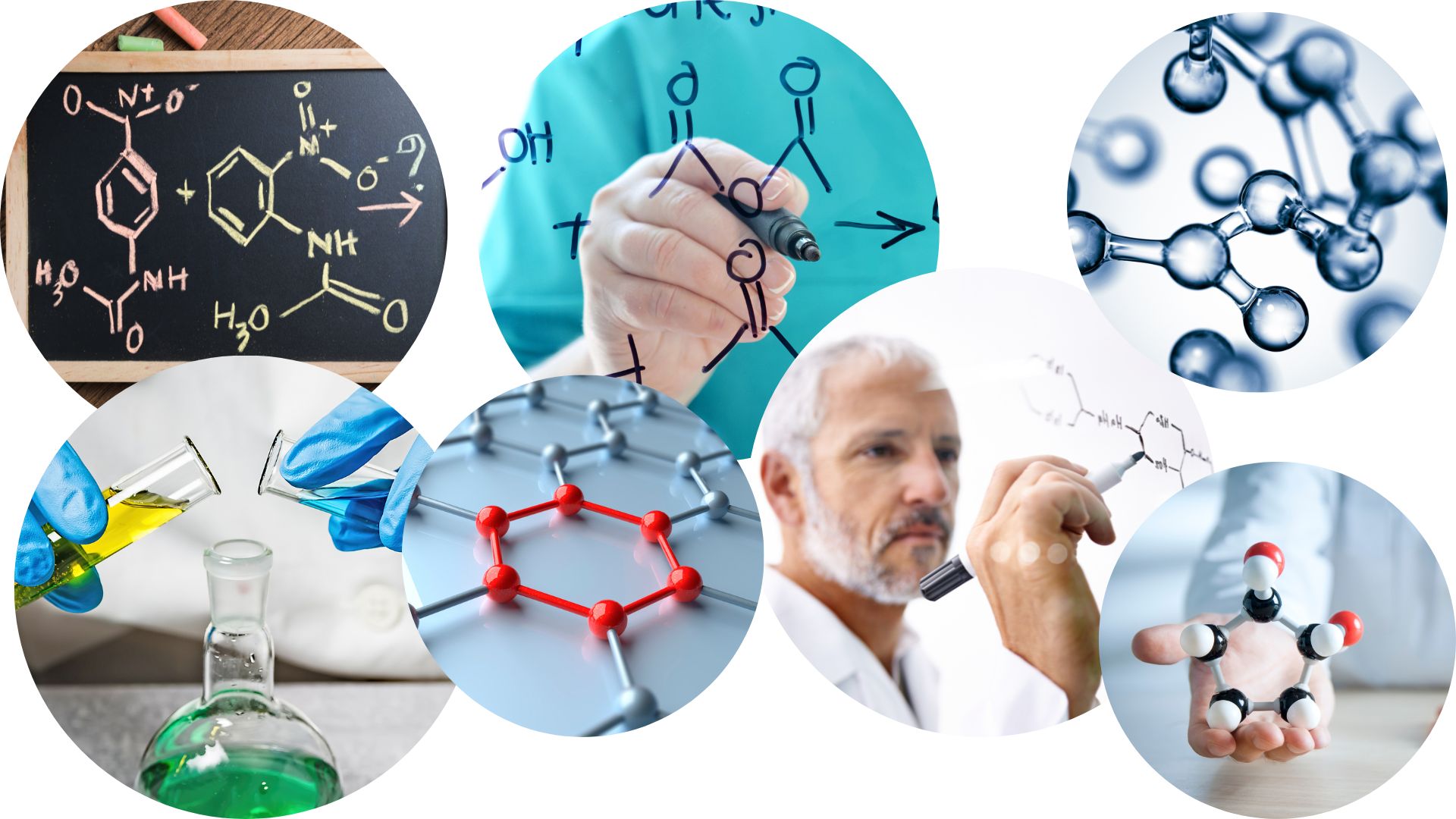 Instructional Goals covered in this module:
Instructional Goals covered in this module:- Understand the mole concept in relation to Avogadro’s number and mass, the relationship of percent composition and chemical formula, the use of chemical formulas to represent chemical reactions, and the quantitative relationship of reactants and products in a chemical reaction.
- Understand the mole concept in relation to Avogadro’s number and mass, the relationship of percent composition and chemical formula, the use of chemical formulas to represent chemical reactions, and the quantitative relationship of reactants and products in a chemical reaction.
-
Module 5: Lesson 1: Ionic Bonding
Student Learning Outcomes:
Upon completion of this lesson, you will be able to:
- Explain the formation of cations, anions, and ionic compounds.
- Predict the charge of common metallic and nonmetallic elements, and write their electron configurations.
- Explain the energetics of ionic bonding.
- Describe some general properties of ionic substances.
1 URL -
Module 5: Lesson 2: Covalent Bonding
Student Learning Outcomes:
Upon completion of this lesson, you will be able to:
- Describe the formation of covalent bonds between two atoms.
- Examine electronegativity to assess the polarity of covalent bonds.
- Distinguish coordinate covalent bonds from conventional covalent bonds.
- Correlate the bonding character of molecules from the electronegativity differences between atoms.
1 URL -
Module 5: Lesson 3: Chemical Nomenclature
Student Learning Outcomes:
Upon completion of this lesson, you will be able to:
- Employ a systematic approach to determine the names of common types of inorganic compounds.
1 URL - Employ a systematic approach to determine the names of common types of inorganic compounds.
-
Module 5: Lesson 4: Lewis Symbols and Structures
Student Learning Outcomes:
Upon completion of this lesson, you will be able to:
- Write Lewis symbols for neutral atoms and ions.
- Draw Lewis structures depicting the bonding in simple molecules.
1 URL -
Module 5: Lesson 5: Formal Charges and Resonance
Student Learning Outcomes:
Upon completion of this lesson, you will be able to:
- Compute formal charges for atoms in any Lewis structure.
- Use formal charges to identify the most reasonable Lewis structure for a given molecule.
- Explain the concept of resonance and draw Lewis structures representing resonance forms for a given molecule.
- Define formal charge and describe the rules for obtaining formal charge.
- State two rules useful in writing Lewis formulas.
1 URL -
Module 5: Lesson 6: Strengths of Ionic and Covalent Bonds
Student Learning Outcomes:
Upon completion of this lesson, you will be able to:
- Describe the energetics of covalent and ionic bond formation and breakage.
- Use the Born-Haber cycle to compute lattice energies for ionic compounds.
- Use average covalent bond energies to estimate enthalpies of reaction.
1 URL -
Module 5: Lesson 7: Molecular Structure and Polarity
Student Learning Outcomes:
Upon completion of this lesson, you will be able to:
- Predict the structures of small molecules using valence shell electron pair repulsion (VSEPR) theory.
- Explain the concepts of polar covalent bonds and molecular polarity.
- Assess the polarity of a molecule based on its bonding and structure.
1 URL -
Module 5: Lesson 8: Intermolecular Forces
Student Learning Outcomes:
Upon completion of this lesson, you will be able to:
- Link the types of intermolecular forces possible between atoms or molecules in condensed phases (dispersion forces, dipole-dipole attractions, and hydrogen bonding).
- Correlate the types of intermolecular forces experienced by specific molecules with their structures.
- Explain the relation between the intermolecular forces present within a substance and the temperatures associated with changes in its physical state.
- Identify and contrast inter and intramolecular forces.
1 URL, 1 Forum -
Module 6: Compounds and Stoichiometry
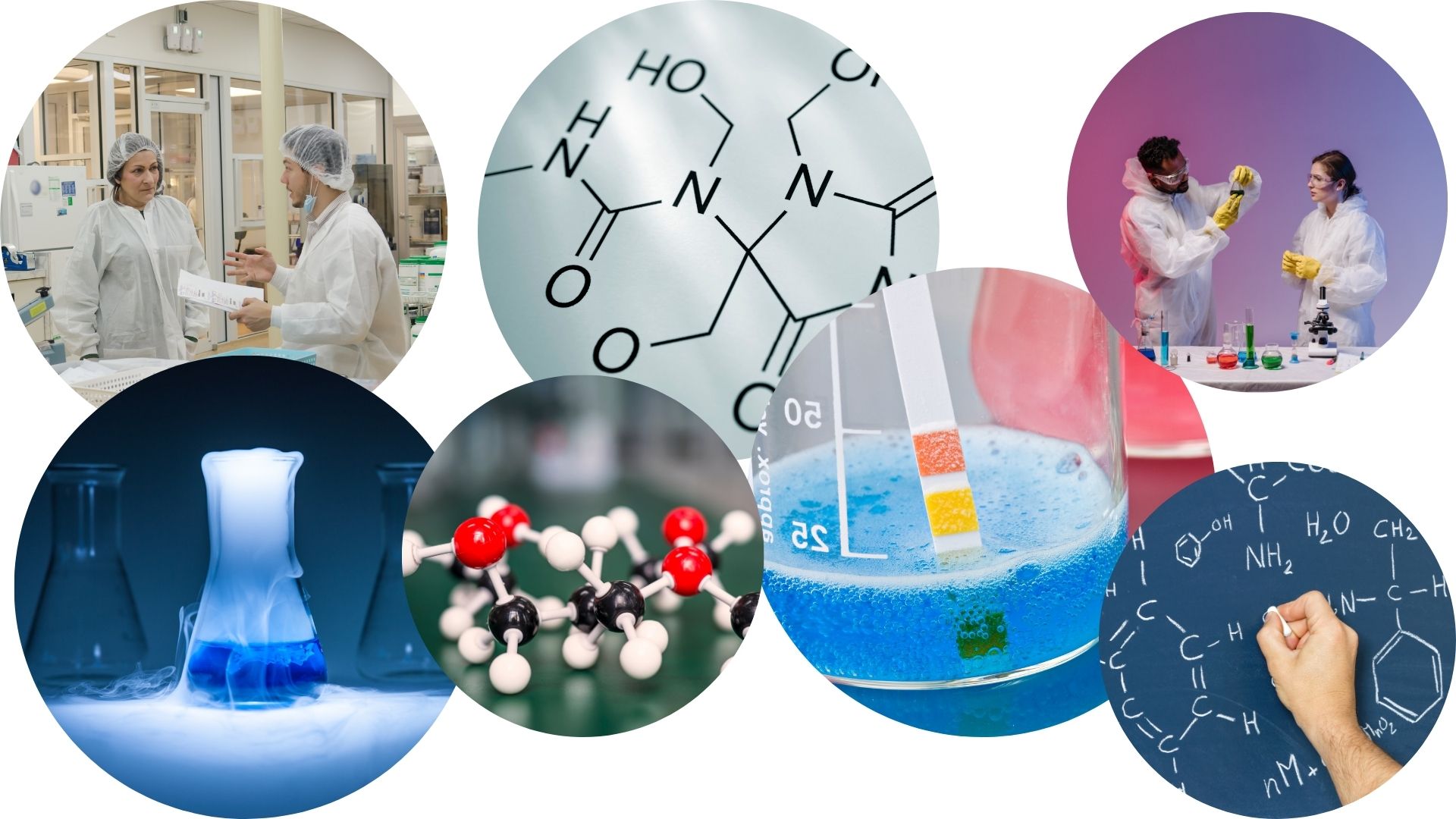 Instructional Goals covered in this module:
Instructional Goals covered in this module:- Understand the fundamentals of acid/base reactions, redox reactions, and precipitation reactions.
- Understand the fundamentals of acid/base reactions, redox reactions, and precipitation reactions.
-
Module 6: Lesson 1: Formula Mass and the Mole Concept
Student Learning Outcomes:
Upon completion of this lesson, you will be able to:
- Calculate formula masses for covalent and ionic compounds.
- Define the amount unit mole and the related quantity Avogadro’s number.
- Explain the relation between mass, moles, and numbers of atoms or molecules, and perform calculations deriving these quantities from one another.
1 URL -
Module 6: Lesson 2: Determining Empirical and Molecular Formulas
Student Learning Outcomes:
Upon completion of this lesson, you will be able to:
- Estimate the percent composition of a compound.
- Calculate the empirical formula of a compound from percent composition.
- Calculate the molecular formula of a compound.
1 URL -
Module 6: Lesson 3: Molarity
Student Learning Outcomes:
Upon completion of this lesson, you will be able to:
- Describe the fundamental properties of solutions.
- Calculate solution concentrations using molarity.
- Perform dilution calculations using the dilution equation.
1 URL -
Module 6: Lesson 4: Other Units for Solution Concentrations
Student Learning Outcomes:
Upon completion of this lesson, you will be able to:
- Define the concentration units of mass percentage, volume percentage, mass-volume percentage, parts-per-million (ppm), and parts-per-billion (ppb).
- Perform computations relating a solution’s concentration and its components’ volumes and/or masses.
1 URL -
Module 6: Lesson 5: Writing and Balancing Chemical Equations
Student Learning Outcomes:
Upon completion of this lesson, you will be able to:
- Derive chemical equations from narrative descriptions of chemical reactions.
- Write and balance chemical equations in molecular, total ionic, and net ionic formats.
1 URL - Derive chemical equations from narrative descriptions of chemical reactions.
-
Module 6: Lesson 6: Classifying Chemical Reactions
Student Learning Outcomes:
Upon completion of this lesson, you will be able to:
- Distinguish the three common types of chemical reactions (precipitation, acid-base, and oxidation-reduction).
- Classify chemical reactions as one of these three types given appropriate descriptions or chemical equations.
- Identify common acids and bases.
- Predict the solubility of common inorganic compounds by using solubility rules.
- Compute the oxidation states for elements in compounds.
1 URL -
Module 6: Lesson 7: Reaction Stoichiometry
Student Learning Outcomes:
Upon completion of this lesson, you will be able to:
- Explain the concept of stoichiometry as it pertains to chemical reactions.
- Use balanced chemical equations to derive stoichiometric factors relating amounts of reactants and products.
- Perform stoichiometric calculations involving mass, moles, and solution molarity.
1 URL -
Module 6: Lesson 8: Reaction Yields
Student Learning Outcomes:
Upon completion of this lesson, you will be able to:
- Explain the concepts of theoretical yield and limiting reactants/reagents.
- Appraise the theoretical yield for a reaction under specified conditions.
- Calculate the percent yield for a reaction.
-
Distinguish the limiting reactant and reactant in excess.
1 URL -
Module 6: Lesson 9: Quantitative Chemical Analysis
Student Learning Outcomes:
Upon completion of this lesson, you will be able to:
- Describe the fundamental aspects of titrations and gravimetric analysis.
- Perform stoichiometric calculations using typical titration and gravimetric data.
1 URL, 1 Forum -
Module 7: Chemical Kinetics
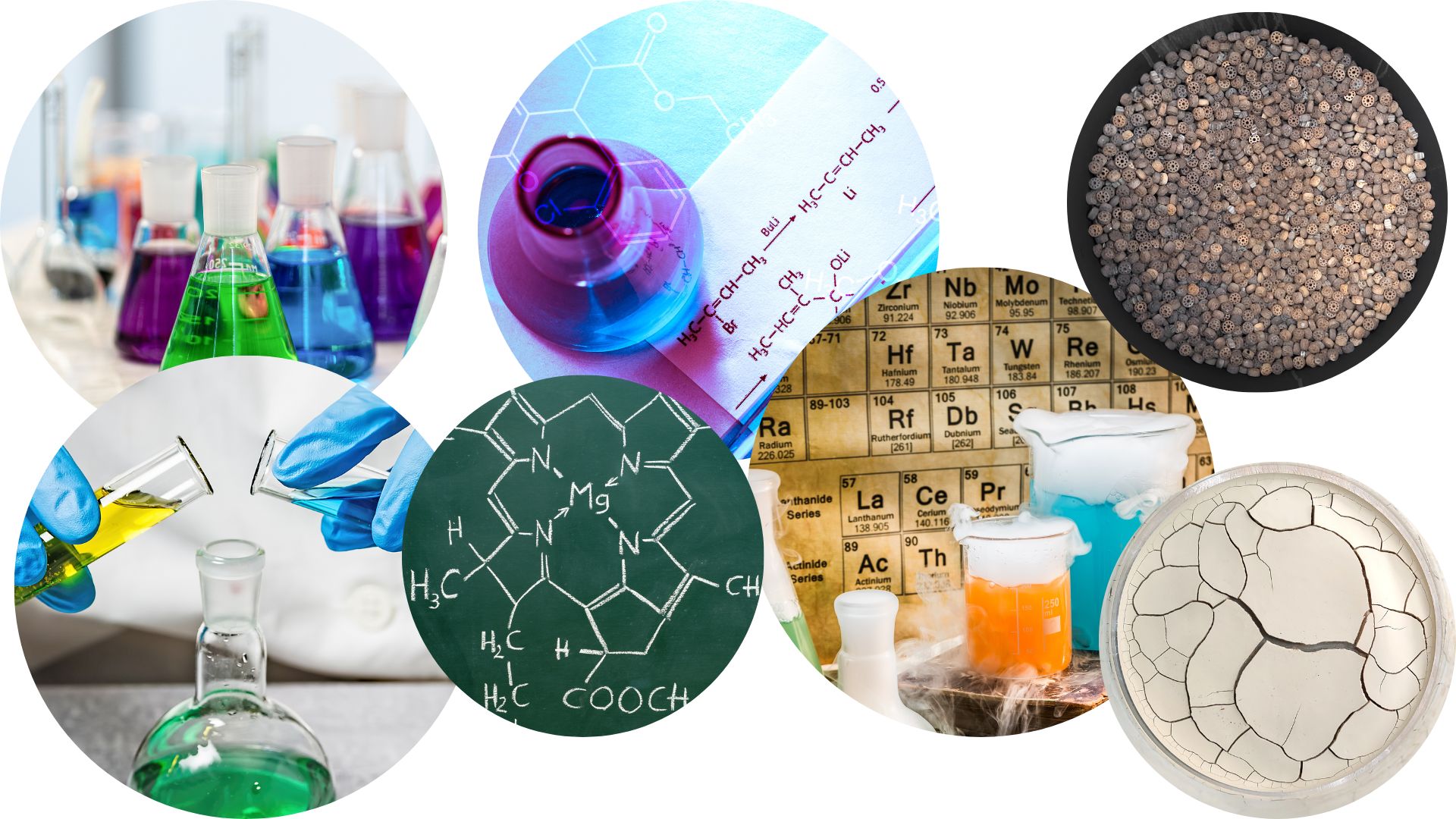 Instructional Goals covered in this module:
Instructional Goals covered in this module:- Understand and apply relevant Rate Laws and conduct calculations to determine reaction order.
- Analyze graphs to determine reaction order.
- Understand Collision Theory and the Arrhenius Equation.
- Understand reaction mechanisms and use them to analyze rate determining steps.
- Analyze and create energy diagrams.
-
Module 7: Lesson 1: Chemical Reaction Rates
Student Learning Outcomes:
Upon completion of this lesson, you will be able to:
- Define chemical reaction rate.
- Calculate reaction rates from experimental data.
- Identify differences between average rate, initial rate, and instantaneous rate.
1 URL -
Module 7: Lesson 2: Factors Affecting Reaction Rates
Student Learning Outcomes:
Upon completion of this lesson, you will be able to:
- Describe the effects of chemical nature, physical state, temperature, concentration, and catalysis on reaction rates.
- Define a catalyst.
1 URL - Describe the effects of chemical nature, physical state, temperature, concentration, and catalysis on reaction rates.
-
Module 7: Lesson 3: Rate Laws
Student Learning Outcomes:
Upon completion of this lesson, you will be able to:
- Explain the form and function of rate law.
- Use rate laws to calculate reaction rates.
- Use rate and concentration data to identify reaction orders and derive rate laws.
- Contrast the rate of a reaction and its rate constant.
1 URL - Explain the form and function of rate law.
-
Module 7: Lesson 4: Integrated Rate Laws
Student Learning Outcomes:
Upon completion of this lesson, you will be able to:
- Explain the form and function of an integrated rate law.
- Perform integrated rate law calculations for zero-, first-, and second-order reactions.
- Define half-life and carry out related calculations.
- Determine the order of a reaction from concentration/time data.
1 URL - Explain the form and function of an integrated rate law.
-
Module 7: Lesson 5: Collision Theory
Student Learning Outcomes:
Upon completion of this lesson, you will be able to:
- Use the postulates of collision theory to explain the effects of physical state, temperature, and concentration on reaction rates.
- Define the concepts of activation energy and transition state.
- Use the Arrhenius equation in calculations relating rate constants to temperature.
1 URL -
Module 7: Lesson 6: Reaction Mechanisms
Student Learning Outcomes:
Upon completion of this lesson, you will be able to:
- Distinguish net reactions from elementary reactions (steps).
- Appraise the molecularity of elementary reactions.
- Write a balanced chemical equation for a process given its reaction mechanism.
- Derive the rate law consistent with a given reaction mechanism.
- Distinguish unimolecular, bimolecular, elementary, and overall reaction.
1 URL -
Module 7: Lesson 7: Catalysis
Student Learning Outcomes:
Upon completion of this lesson, you will be able to:
- Explain the function of a catalyst in terms of reaction mechanisms and potential energy diagrams.
- List examples of catalysis in natural and industrial processes.
- Compare the functions of homogeneous and heterogeneous catalysts.
1 URL, 1 Forum -
Module 8: Chemical Equilibrium
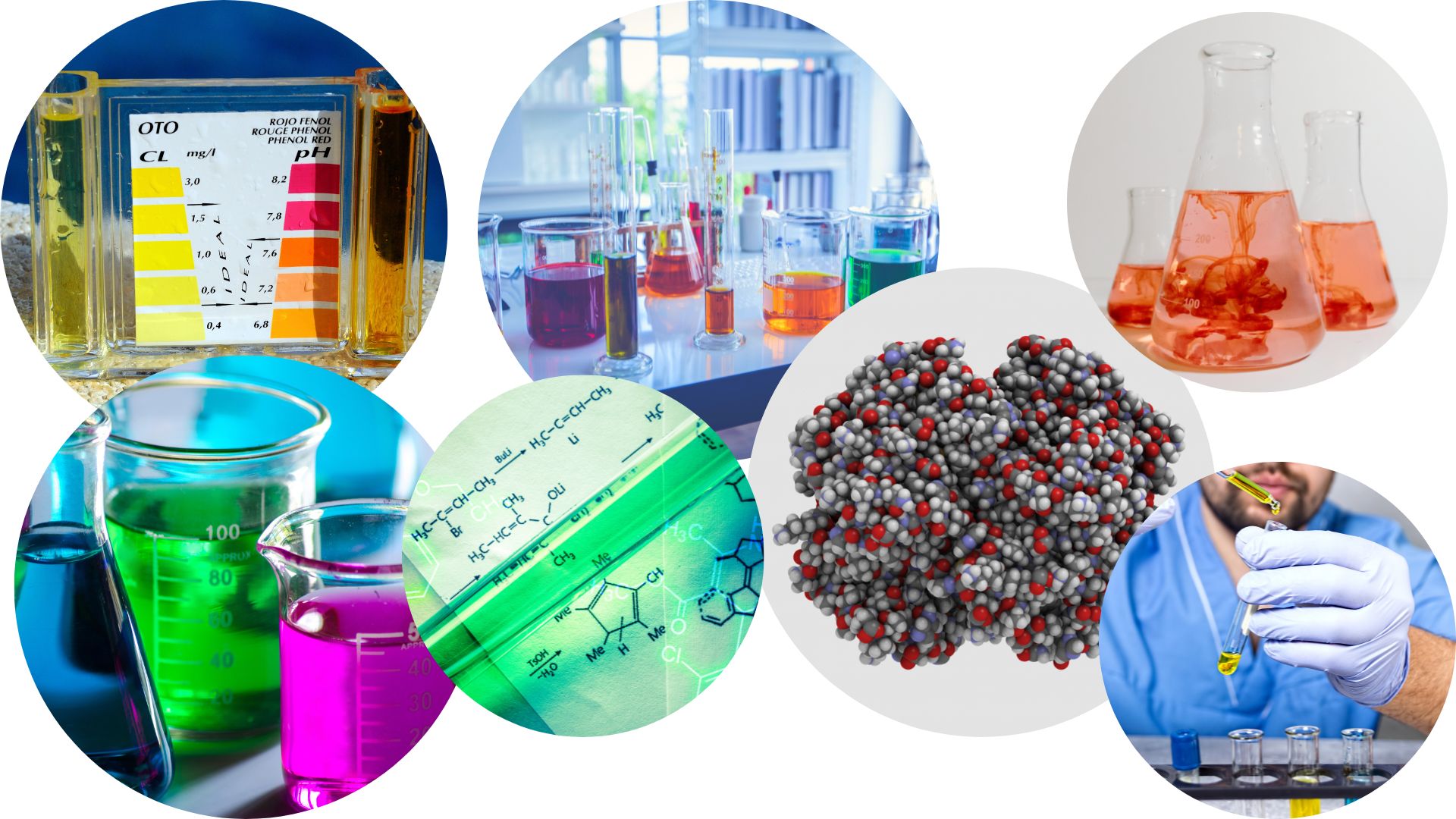 Instructional Goals covered in this module:
Instructional Goals covered in this module:- Understand the concepts and applications of general chemical equilibria and Le Chatelier’s Principle.
- Understand the concepts and applications of general chemical equilibria and Le Chatelier’s Principle.
-
Module 8: Lesson 1: Chemical Equilibrium
Student Learning Outcomes:
Upon completion of this lesson, you will be able to:
- Question the nature of the equilibrium system.
- Explain the dynamic nature of chemical equilibrium.
1 URL - Question the nature of the equilibrium system.
-
Module 8: Lesson 2: Equilibrium Constants
Student Learning Outcomes:
Upon completion of this lesson, you will be able to:
- Derive reaction quotients from chemical equations representing homogeneous and heterogeneous reactions.
- Calculate values of reaction quotients and equilibrium constants, using concentrations and pressures.
- Correlate the magnitude of an equilibrium constant to properties of the chemical system.
1 URL -
Module 8: Lesson 3: Shifting Equilibria: Le Châtelier’s Principle
Student Learning Outcomes:
Upon completion of this lesson, you will be able to:
- Articulate the ways in which an equilibrium system can be stressed.
- Determine the response of a stressed equilibrium using Le Châtelier’s principle.
2 URLs -
Module 8: Lesson 4: Equilibrium Calculations
Student Learning Outcomes:
Upon completion of this lesson, you will be able to:
- Write equations representing changes in concentration and pressure for chemical species in equilibrium systems.
- Use algebra to perform various types of equilibrium calculations.
1 URL, 1 Forum - Write equations representing changes in concentration and pressure for chemical species in equilibrium systems.
-
Course and Self Evaluation & Certificate
 In this section, you can provide feedback about this course to help us make NextGenU.org better. Once evaluations are completed, you will be able to download your certificate of completion.
In this section, you can provide feedback about this course to help us make NextGenU.org better. Once evaluations are completed, you will be able to download your certificate of completion.

